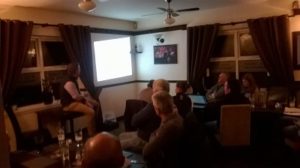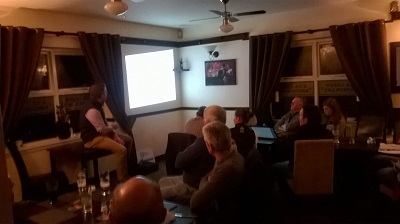Buying Healthy Breeding Stock: Johne’s – event summary
16 February 2017‘Buying Healthy Breeding Stock – Johne’s’ meeting
Johne’s disease does not become apparent in breeding stock for a number of years. However during this time, infected animals could be passing the disease to others. In addition the disease is often hard to diagnose due to the nature of the disease symptoms and pathways.
The meeting was a roaring success with 26 attendees. Colin Mason gave an excellent presentation (view here) on Johnes disease including its epidemiology, how it can be tested for, its effects on farm both financially and from a welfare point of view and how it can be controlled e.g. biosecurity/hygiene etc. At the end of the presentation, Colin previewed a health declarati on card which will be displayed for each animal at many of the up coming breeding sales.
on card which will be displayed for each animal at many of the up coming breeding sales.
Colin also briefly discussed the other four main diseases:
- BVD
- IBR
- Leptospirosis
- TB
This found this very informative by those in attendance as many people were not fully aware of their implications.
Local vet David Campion then gave an good overview of the disease prevalence in Wigtownshire highlighting the beef sector potentially needs to do more.
All and all the meeting was very positive and many of the attendees indicated that they would like to start testing for Johnes in their herds/flocks. In addition, there were requests for further meetings on health related issues.
Johne’s disease
Johne’s leads to progressive damage in ruminants’ intestines resulting in chronic diarrhoea and general wasting of the animal’s condition. It is a disease that can infect both cattle and sheep. This has significant financial implations for a farm business and has a large knock on effect on that farm’s carbon footprint. In addition, the disease also has a major impact on the infected animal’s welfare.
- Carbon Footprinting in the Beef Herd
- Carbon Footprinting in the Beef Herd: A practical guide
- Carbon Footprinting in the Dairy Herd
- Carbon audit application form
Sign up to the FAS newsletter
Receive updates on news, events and publications from Scotland’s Farm Advisory Service

